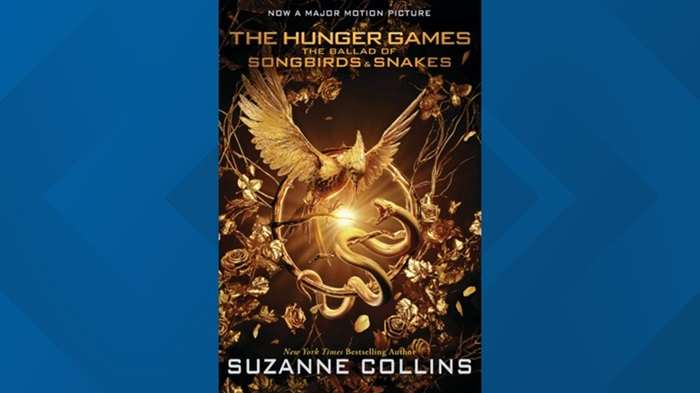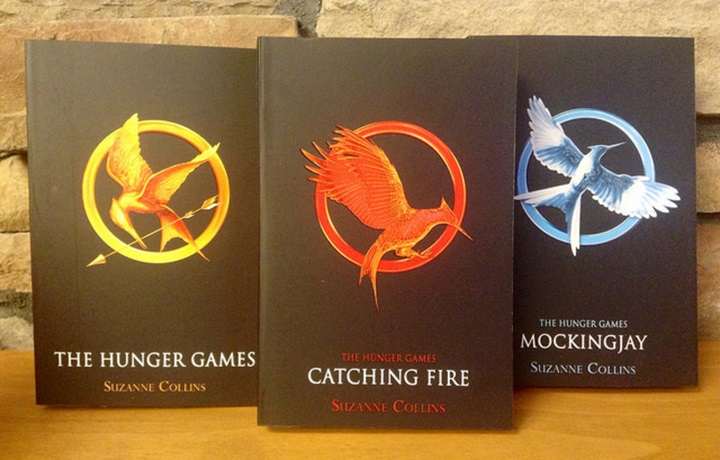The Hunger Games series, written by Suzanne Collins, has captivated millions of readers and viewers across the globe. Set in a dystopian future where young individuals are forced to fight to the death, the story has sparked conversations about political power, survival, and the consequences of war. But just how many Hunger Games books are there? If you’re diving into this exciting world or just curious about its reach, this comprehensive guide will walk you through everything you need to know about the number of books in the Hunger Games series.
The Core Trilogy
The heart of The Hunger Games series consists of a core trilogy. These three books tell the main story of Katniss Everdeen and her journey from a young girl living in the impoverished District 12 to becoming the face of a revolution. Let’s break down each of the three books in the original series.
1. The Hunger Games (2008)
The first book, The Hunger Games, introduces us to the dystopian world of Panem, a nation divided into 12 districts, all ruled by the Capitol. Every year, the Capitol holds the Hunger Games, a brutal televised event in which a boy and a girl from each district fight to the death.
Key Plot Points:
- Katniss Everdeen volunteers to take her sister Prim’s place in the 74th Hunger Games.
- She and Peeta Mellark, the male tribute from District 12, fight for survival in the arena.
- The novel explores themes of survival, loyalty, and the costs of power.
The Hunger Games set the stage for a gripping narrative about rebellion, freedom, and sacrifice, with Katniss’s defiance of the Capitol forming the crux of the plot.
2. Catching Fire (2009)
The second book, Catching Fire, picks up where The Hunger Games left off. After surviving the 74th Hunger Games, Katniss and Peeta become symbols of hope and defiance for the districts, much to the Capitol’s dismay. President Snow sees Katniss as a threat to his power and sets the stage for the 75th Hunger Games, also known as the Quarter Quell.
Key Plot Points:
- Katniss and Peeta are forced to return to the arena with other former victors in the 75th Hunger Games.
- Alliances and betrayals mark their return to the deadly game.
- The novel reveals the growing unrest in the districts, signaling the start of a larger rebellion.
Catching Fire is a masterclass in tension, deepening the political intrigue and setting the stage for the final showdown.
3. Mockingjay (2010)
The final book in the trilogy, Mockingjay, sees Panem in full revolt. Katniss has become the symbol of the rebellion, the “Mockingjay,” and she must navigate the complexities of war, propaganda, and the moral dilemmas of leadership.
Key Plot Points:
- Katniss joins the rebels in District 13, a district thought to have been destroyed.
- The battle against the Capitol reaches its climax.
- The novel delves into the psychological trauma of war and the personal costs Katniss must bear.
Mockingjay delivers a bittersweet conclusion to the trilogy, raising profound questions about power, sacrifice, and humanity.
The Prequel: The Ballad of Songbirds and Snakes (2020)

In 2020, Suzanne Collins surprised fans by releasing a prequel to the original trilogy, The Ballad of Songbirds and Snakes. Set 64 years before the events of The Hunger Games, this book offers a new perspective on the world of Panem by focusing on a young Coriolanus Snow, the future tyrannical president of Panem.
Key Plot Points:
- The novel follows 18-year-old Coriolanus Snow as he mentors a tribute in the 10th Hunger Games.
- It explores the early history of the Games and the Capitol’s control over the districts.
- Snow’s rise to power and his internal moral conflicts take center stage.
While the core trilogy focuses on rebellion and survival, The Ballad of Songbirds and Snakes offers a deep dive into the political and psychological origins of one of the series’ main antagonists. It gives readers a nuanced look at how Snow became the cold, calculating leader seen in the original trilogy.
Total Number of Books in the Series
So, how many Hunger Games books are there in total? Including the prequel, there are four books in the Hunger Games series:
- The Hunger Games (2008)
- Catching Fire (2009)
- Mockingjay (2010)
- The Ballad of Songbirds and Snakes (2020)
While the original trilogy tells a complete story, the prequel adds depth and complexity to the world of Panem, making it a must-read for fans eager to explore the background of key characters and events.
The Future of the Hunger Games Universe: More Books?
With the release of The Ballad of Songbirds and Snakes, many fans have wondered if Suzanne Collins plans to continue expanding the Hunger Games universe. As of now, there are no official announcements regarding future books. However, given the success of the series and Collins’s knack for world-building, it’s possible that more stories could be told in Panem, either as prequels, spin-offs, or even sequels.
Possible Directions for New Books:
- Further Exploration of Snow’s Reign: While The Ballad of Songbirds and Snakes focuses on Snow’s early life, there’s potential to explore more of his rise to power and the early years of his presidency.
- The Rebellion’s Aftermath: Another direction could be a sequel series that delves into the rebuilding of Panem after the events of Mockingjay. How do the districts recover from war? What challenges does Katniss face in her new life?
- Other Victors’ Stories: There’s also room to explore the stories of other victors of the Hunger Games, such as Haymitch Abernathy or Finnick Odair, providing a different perspective on the horrors of the Games.
While these ideas remain speculative, fans can certainly hope for more stories set in this rich and complex world.
Themes in the Hunger Games Series

The Hunger Games books are more than just action-packed thrillers; they are deeply layered with social, political, and ethical themes. Let’s explore some of the key themes that run through the series.
1. Power and Oppression
One of the central themes of the series is the imbalance of power between the Capitol and the districts. The Hunger Games themselves serve as a tool of oppression, a way for the Capitol to remind the districts of their subjugation. The Capitol’s absolute control and the brutal methods it uses to maintain its authority are explored in-depth, especially as Katniss and the other characters grapple with their roles in the rebellion.
2. Survival and Sacrifice
At its core, the series is a story of survival. Katniss’s journey, from volunteering for her sister in The Hunger Games to leading the rebellion in Mockingjay, is marked by personal sacrifices. She loses loved ones, confronts impossible choices, and must navigate a world where survival often comes at a great moral cost.
3. The Impact of War
War and its consequences are explored throughout the series, especially in Mockingjay. The psychological and emotional toll of violence is a recurring theme, with characters like Katniss and Peeta showing signs of trauma and PTSD. Collins doesn’t shy away from the brutality of war, making the series a powerful commentary on its human cost.
4. Media and Propaganda
The role of media and propaganda is another significant theme. The Hunger Games themselves are a televised spectacle, designed to entertain the Capitol and terrify the districts. In Mockingjay, the rebellion uses propaganda as a tool for its cause, highlighting how media can shape public perception and manipulate emotions.
Why the Hunger Games Series Remains Relevant
More than a decade after the release of the first book, the Hunger Games series remains relevant for its exploration of timeless themes. In a world where issues of power, inequality, and media influence are still pressing, Collins’s series continues to resonate with readers of all ages. The series doesn’t just entertain; it challenges readers to think critically about the world around them and the systems of power that govern their lives.
Related Post:
Exploring “Run 3 Unblocked Games”: A Cosmic Adventure
The Ultimate Guide to Tomb Raider Games in Order: A Journey Through Lara Croft’s Legacy
The Cast of Love Island Games: Meet the Vibrant Personalities Behind the Show
So, to answer the question: How many Hunger Games books are there? There are four in total, including the original trilogy and the 2020 prequel. These books not only tell a gripping story of survival and rebellion but also delve into complex themes that continue to captivate readers.
Whether you’re a longtime fan or just beginning your journey into the world of Panem, the Hunger Games series offers a rich, thought-provoking reading experience that goes far beyond the arena. And with the potential for more stories to come, there’s no telling where Suzanne Collins might take us next in this unforgettable dystopian universe.


